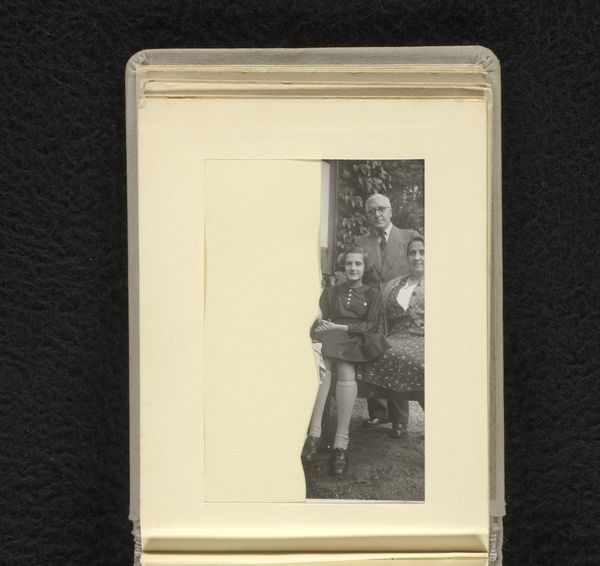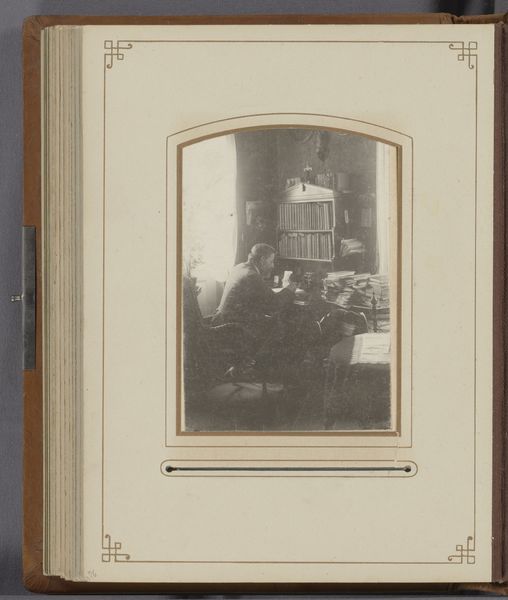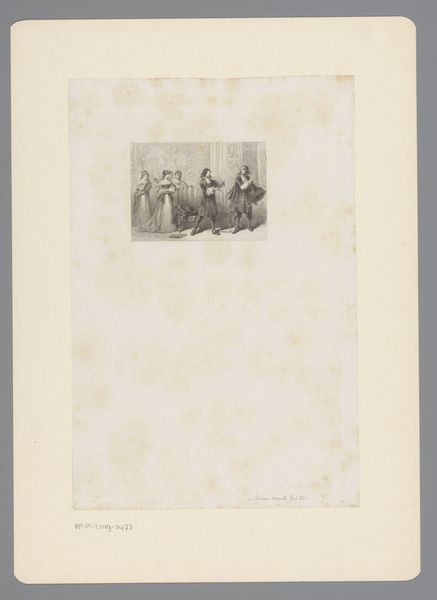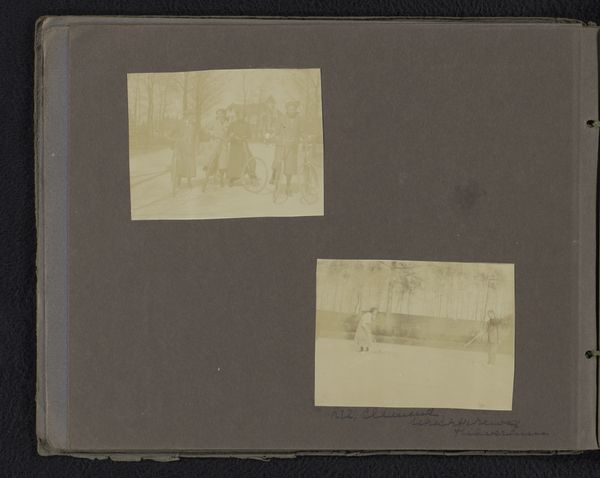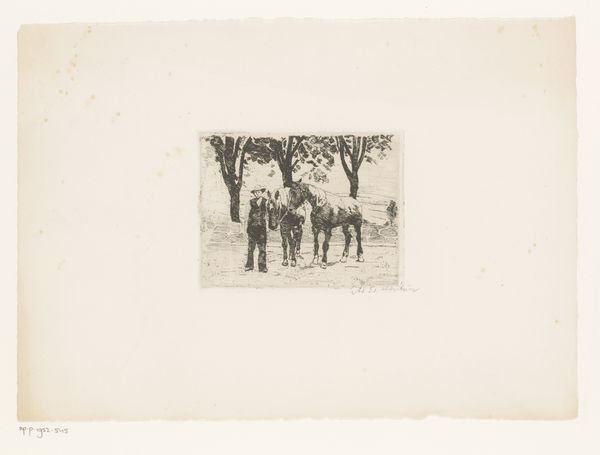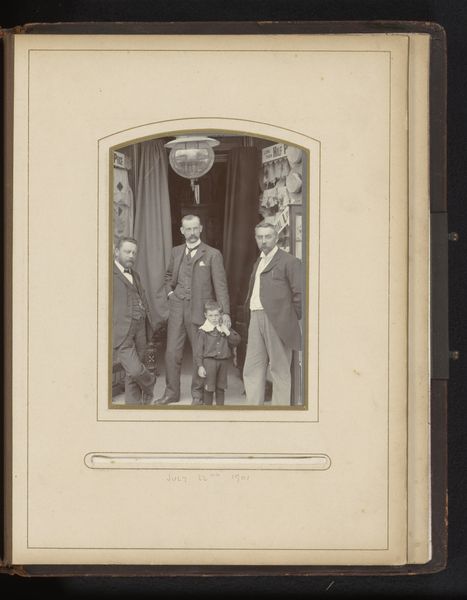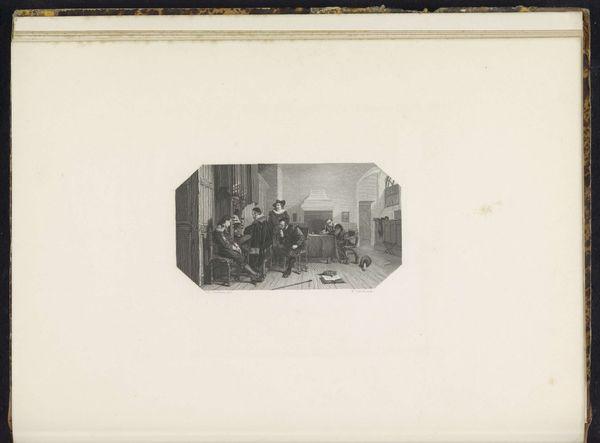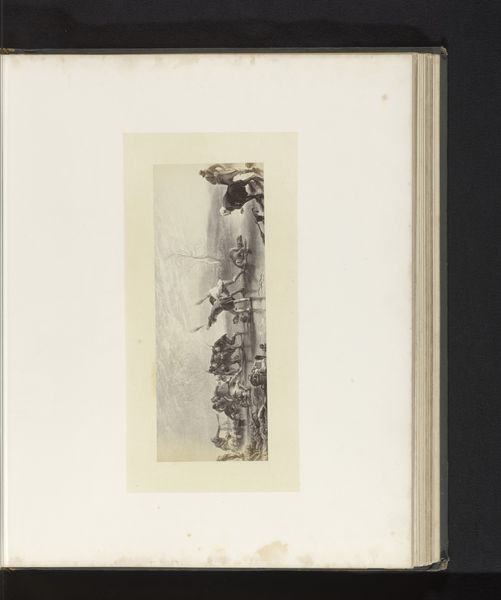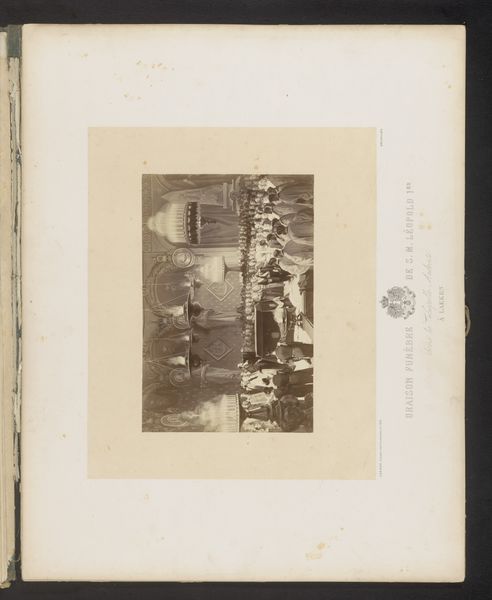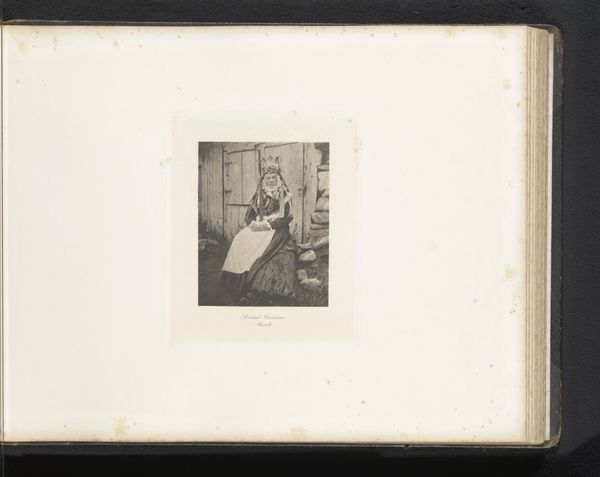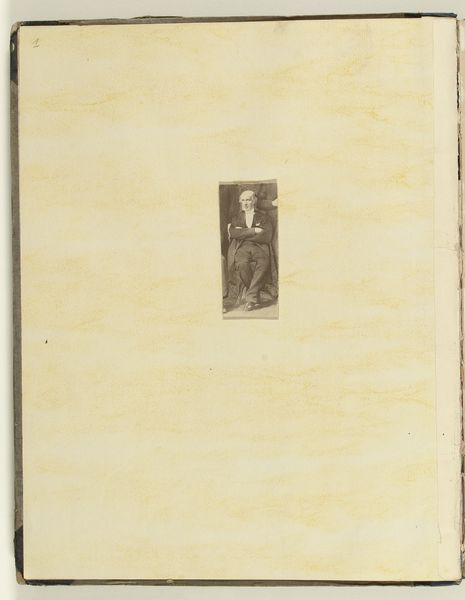
Dimensions: height 136 mm, width 96 mm
Copyright: Rijks Museum: Open Domain
Editor: Here we have A. Courrier’s "Portret van drie kinderen tijdens een toneelspel," which translates to "Portrait of Three Children During a Play," taken sometime between 1887 and 1900, using a gelatin-silver print. There’s a sense of childhood innocence and also performance… What strikes you about this piece? Curator: Well, first, the fact that this photograph exists in a stunning wood-grained frame reminds us that images, particularly portraits, were not just captured but deliberately presented within the domestic space. I’m particularly drawn to thinking about how the performative aspects within the photo, those "roles" they're enacting, reflect and possibly subvert the societal expectations placed on children at the time, wouldn’t you agree? Editor: I think so! It’s hard not to see those potential power dynamics playing out, especially considering gendered roles in that era. The two boys seem to have donned militaristic garb, one with an officer's cap, standing beside the girl, seemingly more passive, holding what I assume is her doll? Curator: Precisely. Look at the historical context; late 19th century, burgeoning imperial ambitions, social structures steeped in hierarchy. Now, consider the staged nature of the photograph. What if we view it as a microcosm of the larger theater of societal roles? Do you think there’s something quietly subversive in capturing, and thus, in some way, questioning this performance of childhood itself? Editor: I didn’t think about it that way, but yes, I think there’s a layer of self-awareness there. By documenting it, there's an implicit questioning of the imposed roles, or even an attempt to play with and explore them. It is truly so poignant, it now prompts further questions on cultural assumptions, the nuances of family dynamics, and how they relate to contemporary debates about childhood and representation. Curator: Exactly, seeing it not as a passive document but as an active engagement with the shaping of identities. I find that exciting.
Comments
No comments
Be the first to comment and join the conversation on the ultimate creative platform.
